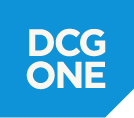2021-USPS-Promotions
/in USPS & MailingDownload your PDF here!
2020 USPS Direct Mail Promotions
/in Direct Mail, USPS & MailingDownload your PDF here and give us a call to learn how to qualify your next direct mail project!

Download your PDF here!
Download your PDF here and give us a call to learn how to qualify your next direct mail project!